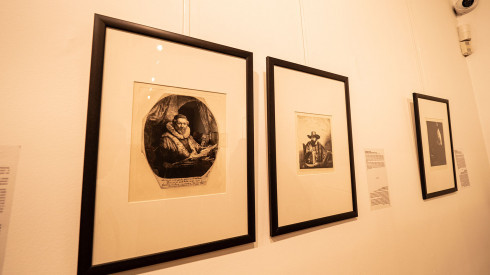
In the Mirror of Rembrandt
Each era formed its own image and understanding of Rembrandt. The exhibition "In the Mirror of Rembrandt", although only through thirty-one heliogravures, aims to generate reflections and experiences and to awaken questions in the attentive viewer.
Many of the texts accompanying the prints were written by students in the Art History and Art Management program, under the supervision of Dr. Todor Petev.
Rembrandt van Rijn
Beggar Seated on a Bank, 1630
Photogravure after etching, 12 х 7.6
Monogram signature and date, lower center: RHL 1630
Viewers familiar with Rembrandt's image would instantly think that the squatting beggar is a self-portrait of the artist himself, one of many he created in the course of his career. And they would probably be right. Is this early etching an expression of self-irony, gently stroking the self-esteem of an artist begging for commissions from the wealthy, or an unapologetic critique of his own existence as a kind of pauper artist, forced to reconcile his work with the tastes and values of the powerful of the day in order to get his daily bread? The answer to this question is found in the geometric centre of the etching: the beggar's hand reaching out for alms – it is so poorly defined that it is barely noticeable. Why would Rembrandt have singled out that hand, in a central position, yet undeveloped and barely visible? It is an expression of his own deep shame.
